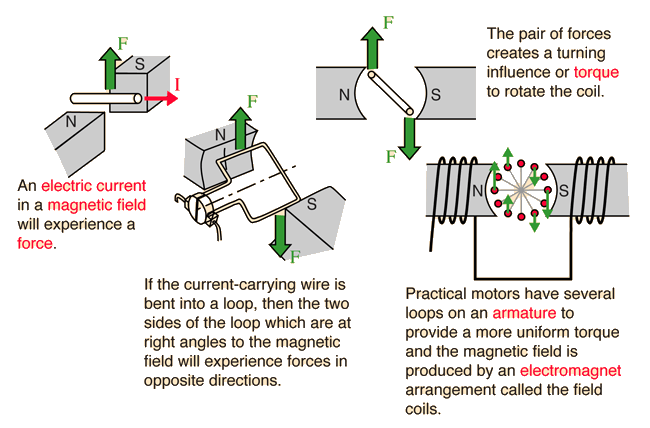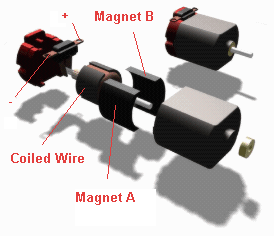To make the brushhead oscillate, there's a mechanism inside the brush that converts the horizontal movement into the vertical movement of the brushhead itself.
23-11-2010
16-11-2010
Cam and gears
The cam and gears convert the rotating movement from the motor into a oscillating movement.
Here you can find some pictures of the gearbox.
I made a sketch to explain how it works:
On the rotating shaft of the motor there's a gear, that drives an other bigger gear. So the big gear will rotate slower. That gear drives a yard arm that converts the rotating movement into a oscillating movement.
11-11-2010
The motor of an electric toothbrush
Inside the toothbrush is an DC-motor used to convert electric flux into a mechanical motion.
How does a DC motor work?



How does a DC motor work?



02-11-2010
The battery of an electric toothbrush
The electric toothbrush uses a rechargeable battery.
Advantages rechargeable battery:
- Most batteries run low rather quickly and you'd have to throw them away.
- It's expencive to use new batteries every time
- Normal batteries are also bad for the environment.
- For electric toothbrushes, it's better to work with reachargeable battery with a transformer, because then you can make the toothbrush completely closed. So the water can't get inside.
Types of batteries
Although there are lots of different kinds of batteries, there are really only two types: disposable and rechargeable. They contain two different kinds of cells. Primary cells make the power in ordinary, disposable batteries. They produce electricity by slowly using up the chemicals from which the electrodes and electrolyte are made. Secondary cells power rechargeable batteries. Unlike primary cells, secondary cells can be recharged simply by passing a current through them in the reverse direction to normal. When you charge your electric toothbrush, you are really just running the battery (and the chemical reactions inside it) in reverse.
There are different types of batteries used for electric toothbrushes.
There are different types of batteries used for electric toothbrushes.
Nickel-Metal Hydride battery
A nickel-metal hydride cell (NiMH), is a type of secondary electrochemical cell similar to the nickel-cadmium cell. The NiMH battery uses a hydrogen-absorbing alloy for the negative electrode instead of cadmium. As in NiCd cells, the positive electrode is nickel oxyhydroxide (NiOOH). A NiMH battery can have two to three times the capacity of an equivalent size nickel-cadmium battery. Compared to the lithion-ion batteries, the volumetric energy density is similar but self-discharge is higher.
A nickel-metal hydride cell (NiMH), is a type of secondary electrochemical cell similar to the nickel-cadmium cell. The NiMH battery uses a hydrogen-absorbing alloy for the negative electrode instead of cadmium. As in NiCd cells, the positive electrode is nickel oxyhydroxide (NiOOH). A NiMH battery can have two to three times the capacity of an equivalent size nickel-cadmium battery. Compared to the lithion-ion batteries, the volumetric energy density is similar but self-discharge is higher.
Lithium-ion batteries
Lithium is a lightweight metal that easily forms ions, so it is excellent for making batteries. The latest lithium-ion batteries can store about twice as much energy as traditional NiC rechargeables, that work with Nickel and Cadmium-ions. The Lithium-ins batteries also work at higher voltages, and are more environmentally friendly, but do not last as long. There are lithium-ion batteries in your cellphone, mp3, laptop and electric toothbrush.
In this toothbrush there's an NiMH battery used.
When you plug the toothbrush into the power supply, the battery inside starts buzzing with chemical activity. The battery's job is to store as much electricity as possible, as fast as possible. It does this through a chemical reaction that shunts lithium ions from one part of the battery to another.
When you unplug the power and use your electric toothbrush the battery switches into reverse: the ions move the opposite way and the battery gradually loses its charge.

Abonneren op:
Posts (Atom)






